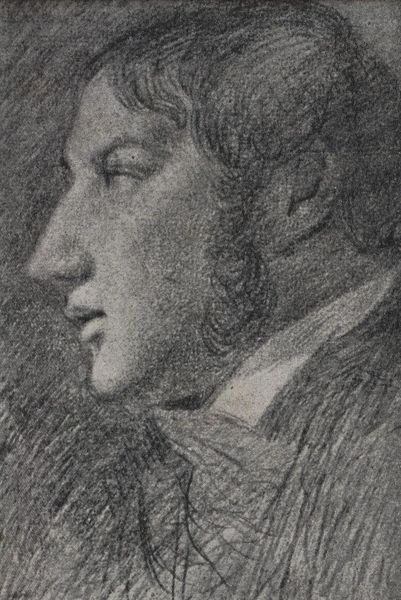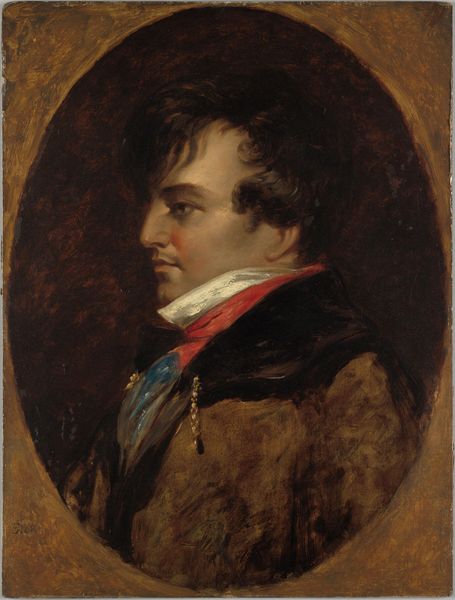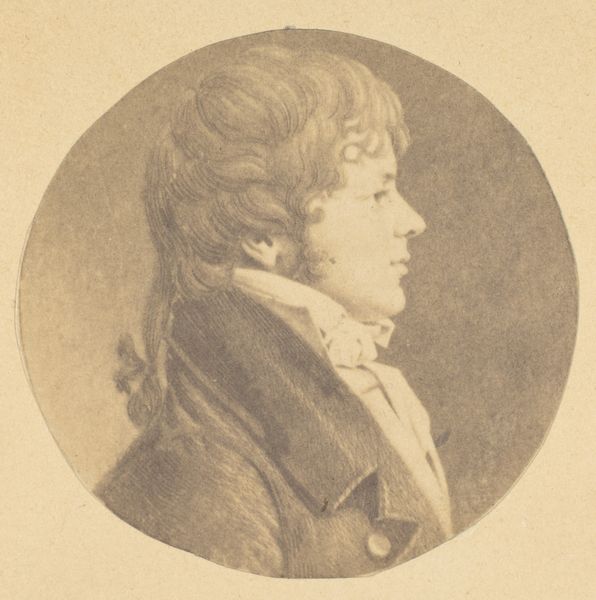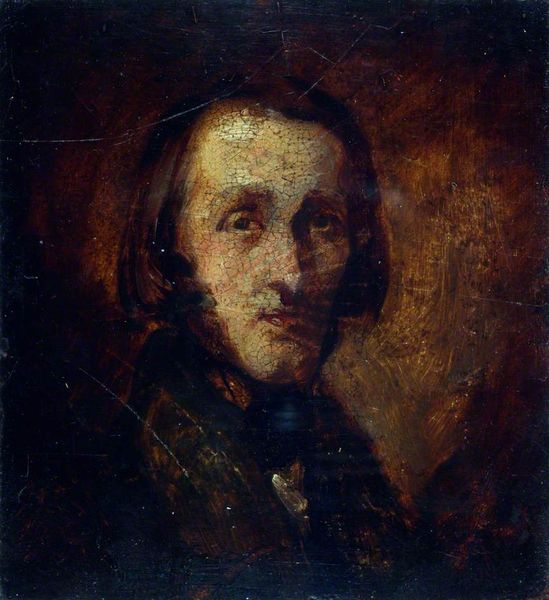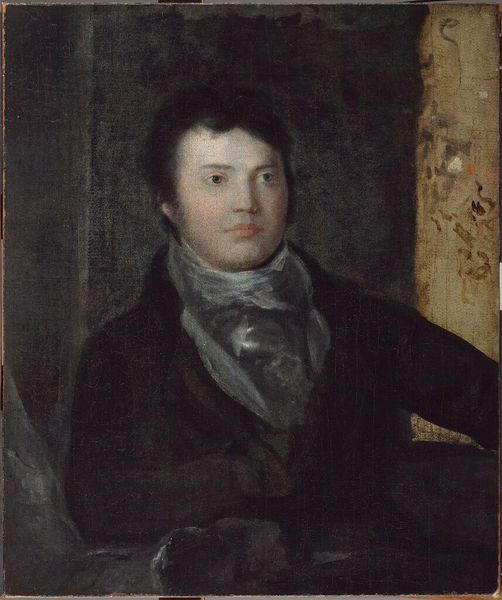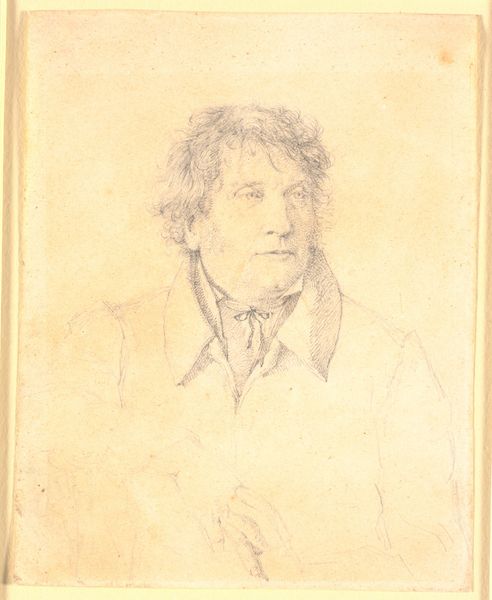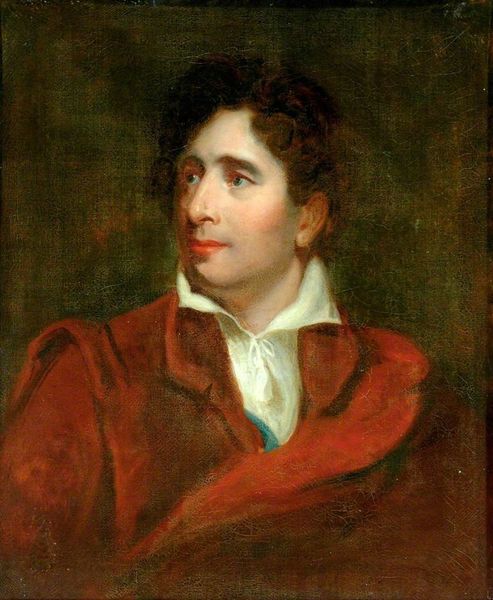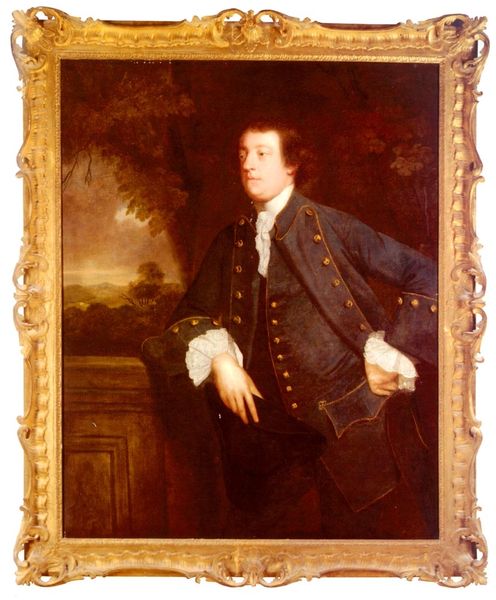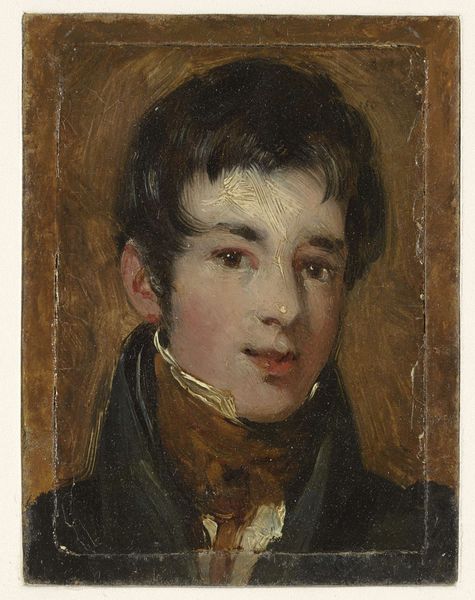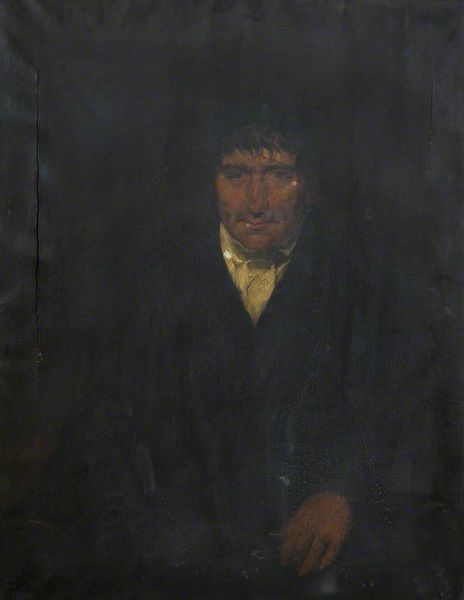
drawing, oil-paint
#
portrait
#
drawing
#
baroque
#
oil-paint
#
oil painting
#
romanticism
#
portrait drawing
Copyright: Public domain
Curator: This is a portrait of Charles Kemble, attributed to Thomas Lawrence, crafted with oil paints. Its current location is unspecified, so its history is something of a mystery to us right now. Editor: There's a captivating stillness in this piece. The rich, warm hues create an almost melancholic atmosphere. Kemble's gaze is directed elsewhere, lost in thought perhaps. Curator: Lawrence was indeed a master of capturing the essence of his sitters, deeply embedded within the romanticism movement. During the Romantic period in the late 18th and early 19th centuries, the development and expression of a unique individuality in art became paramount. The portrayal of emotion, too, was prized, which perhaps we see evident here in the way Kemble is portrayed with an evident expression of sadness or contemplation. Editor: This is compelling considering that Romanticism, especially at this time, had strong links to the development of individualism and notions of the "self", especially for the elite and emerging professional classes. We can speculate what such a work can represent regarding the construction of masculinity at the time. Curator: Lawrence's portraits, displayed prominently in venues such as the Royal Academy, played a crucial role in shaping public perceptions and consolidating the status of prominent figures such as Charles Kemble within British society. The portrait's circulation, through exhibitions and reproductions, shaped Kemble's image as a cultivated and sensitive man, contributing to the wider discourse surrounding gender and status in that society. Editor: And the darkness, especially with those more Baroque undertones and those contrasts of light and shadow. It speaks volumes, both subtly and overtly, concerning the individual, society and what this work attempts to accomplish for all those constructs. Curator: This portrait encapsulates both artistic innovation and socio-political forces that have been used throughout time in constructing identities. The role of the public exhibition and the reproductions shaped viewers' idea and perceptions, further consolidating its subject's cultural importance and place within the broader social tapestry. Editor: In the end, viewing Kemble's portrait becomes more than an act of mere admiration, for the artwork really encapsulates a glimpse of selfhood, and its complex relation to societal forces at work.
Comments
No comments
Be the first to comment and join the conversation on the ultimate creative platform.
